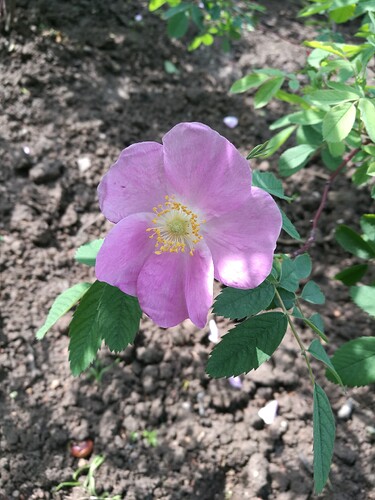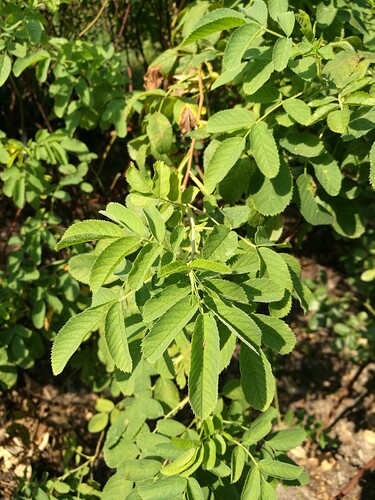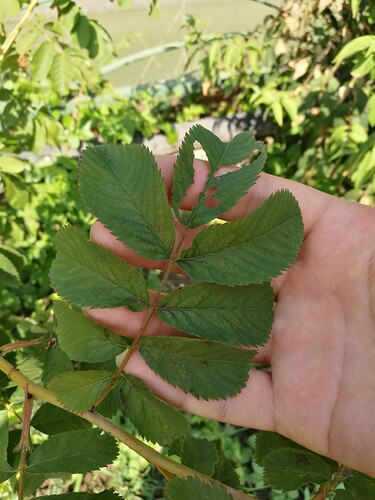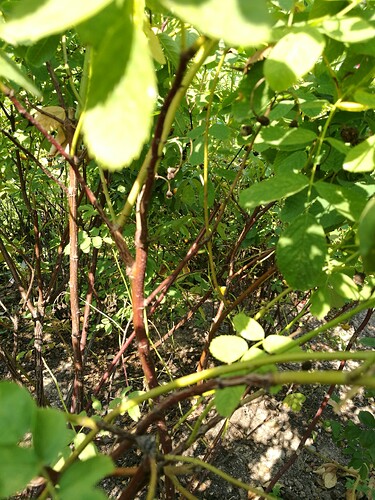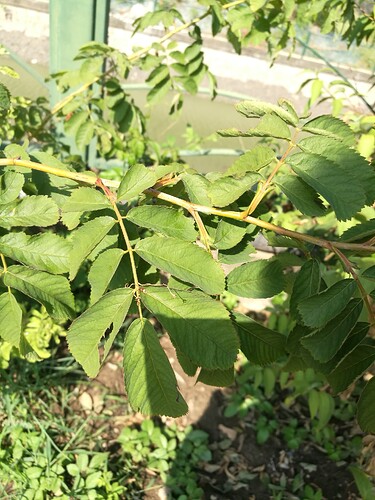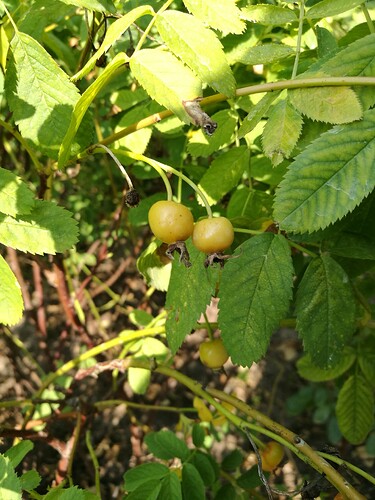This rose was introduced as R. davurica, but recently I found it looks more resemble to R. blanda.
Erect, dense shrub, occasionally sucker. Absolutely thornless on stems but sometimes thorny on rachis.
And, is it worthy to use as a breeding material, especially for creating thornless roses?
1 Like
That does look more like a selection of Rosa blanda to me, although the forms that I am familiar with have prickles at the base and then become smooth higher up. That one is especially smooth on the lower canes. I don’t recall the rachis being very prickly, but will have to check that again.
In any case, while you can get smoother-stemmed offspring from that species, multiple generations might be needed to recover various other traits expected from a garden rose. The especially smooth canes in your clone might be the result of some even stronger genetic suppression of prickles, which seems promising.
Stefan
1 Like
Thanks.
I’m happy to find that this is a thornless form of R. blanda because it is very difficult for me to get a species rose native to North America, not to mention that’s one with desirable trait.
The rachis of this rose is not very prickly, usually inermis but sometimes with small prickles.
It seems self incompatible, no hips when growing alone but set a lot of hips when growing along with hybrid rugosas. When hybrid with R. rugusa as pollen parent, F1 seedings are all thorny but thorns seem weaker than “pure” R. rugosa seedlings. Perhaps backcross them with this R. blanda can get seedlings with few or no prickles.
Mingwei
1 Like
